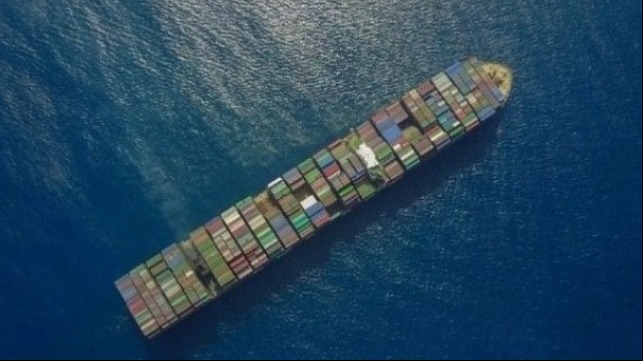Xeneta Says Records Are Over, Forecasts Rates Will Fall into 2023

Long-term ocean freight rates suffered a steep month-on-month decline in November as subdued spot prices, weak demand, and ongoing economic uncertainty caught up with contracted container agreements according to Xeneta. The benchmarking and market intelligence platform is now predicting further falls in rates going into the new year. Their analysts are predicting volumes could drop by 2.5 percent or more causing carriers to idle more than 1 million TEU early in 2023.
“A drop in long-term rates is no surprise, but the scale of this demonstrates the challenges facing the industry at present,” said Patrik Berglund, Xeneta CEO. “We’ve already seen how spot rates have collapsed since summer, and, after a few months of very slender long-term rates drops, we’re now witnessing a ‘catch-up’ as existing agreements expire and new contracts come into force.”
Xeneta’s analysis indicates that during November global rates fell by 5.7 percent, with all major corridors experiencing negative import and export trends While this is the third month in a row that rates have dropped, they are highlighting it is the largest month-on-month decline in the three years they have been tracking freight rates.
Berglund says that depressed consumer demand in the face of the rising cost of living is leaving carriers in a position where they’re now “fighting for volume” after over two years of strong demand, supply chain congestion, and under-capacity. The current declines he believes are an unmistakable sign of the shift in market fundamentals.
“Average rates are now falling, marking an end to the record-breaking quarters that we’ve almost grown accustomed to seeing from the leading carriers,” said Berglund. “As we approach 2023, stormy waters await for a segment that is so often a bellwether for global economic well-being.”
While rates are declining quickly, Xeneta however highlights that they are falling from a high. Global rates are still up 67.2 percent compared to November 2021, according to their analysis. They however pointed out that it is the first month since October 2021 when their index is up less than 100 percent year-on-year.
No region is spared from the latest declines in rates according to Xeneta’s data. European imports for example fell for the third month in a row, dropping 3.5 percent, but remain up 47.9 percent year-on-year. Exports fared slightly better due to the continuing strength of the Europe to U.S. East Coast trade but they too edged down just over one percent.
Far East exports experienced their largest-ever drop, falling by 8.5 percent while remaining up 68.5 percent year-on-year. Similarly, the import benchmark declined by 6.2 percent for the month but remains up by over 30 percent in November 2021.
In the U.S., both export and import benchmarks saw steep falls in November. With low volumes on the Transpacific corridor and spot rates that are said to be “below break-even” on some services, Xeneta’s data shows a significant 8.9 decline for import rates while export rates were only slightly better with a 5.3 percent decline.
“It’s difficult to see how the declines will be arrested in the short- to mid-term,” Berglund comments. “China’s continued zero-COVID policy means much of the country is now in some form of lockdown, while in the U.S. and Europe, the expected peak season for cargoes has been a non-starter, with worrying macro-economic indicators front of mind.”
Xeneta forecasts that 2023 will usher in much tougher times for the global carrier community.
